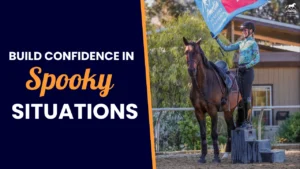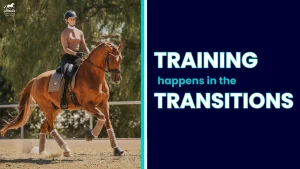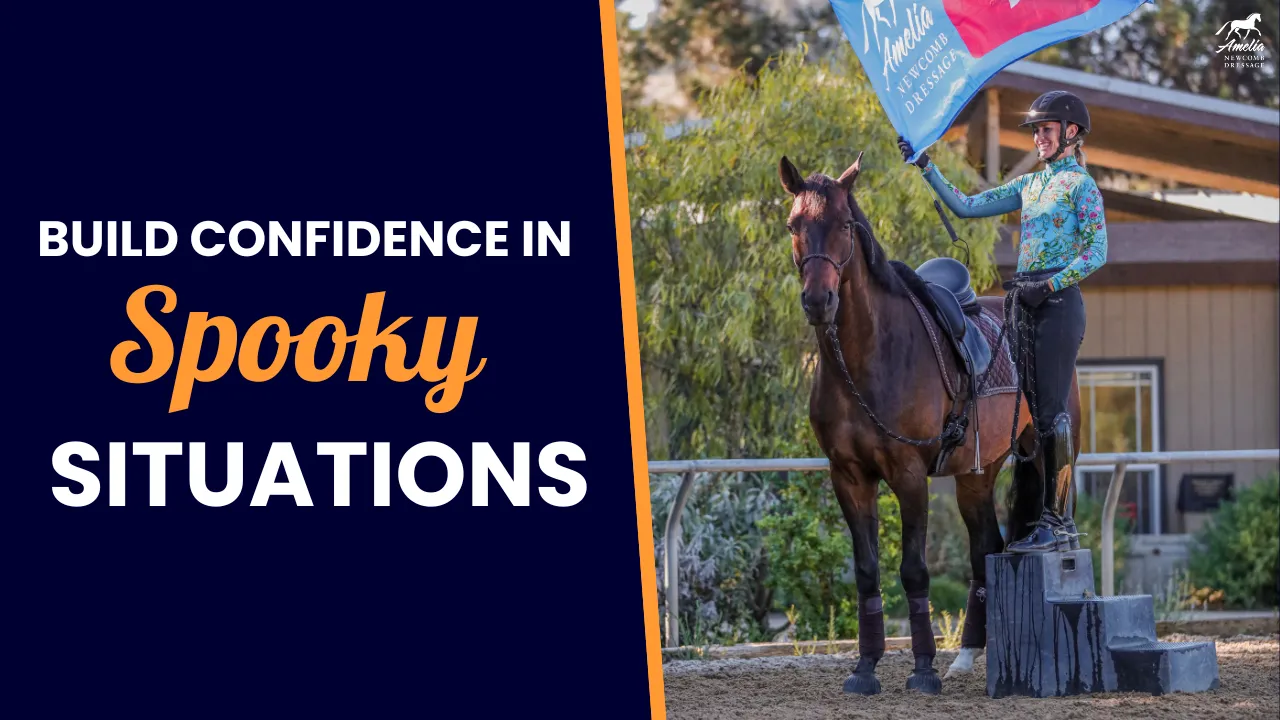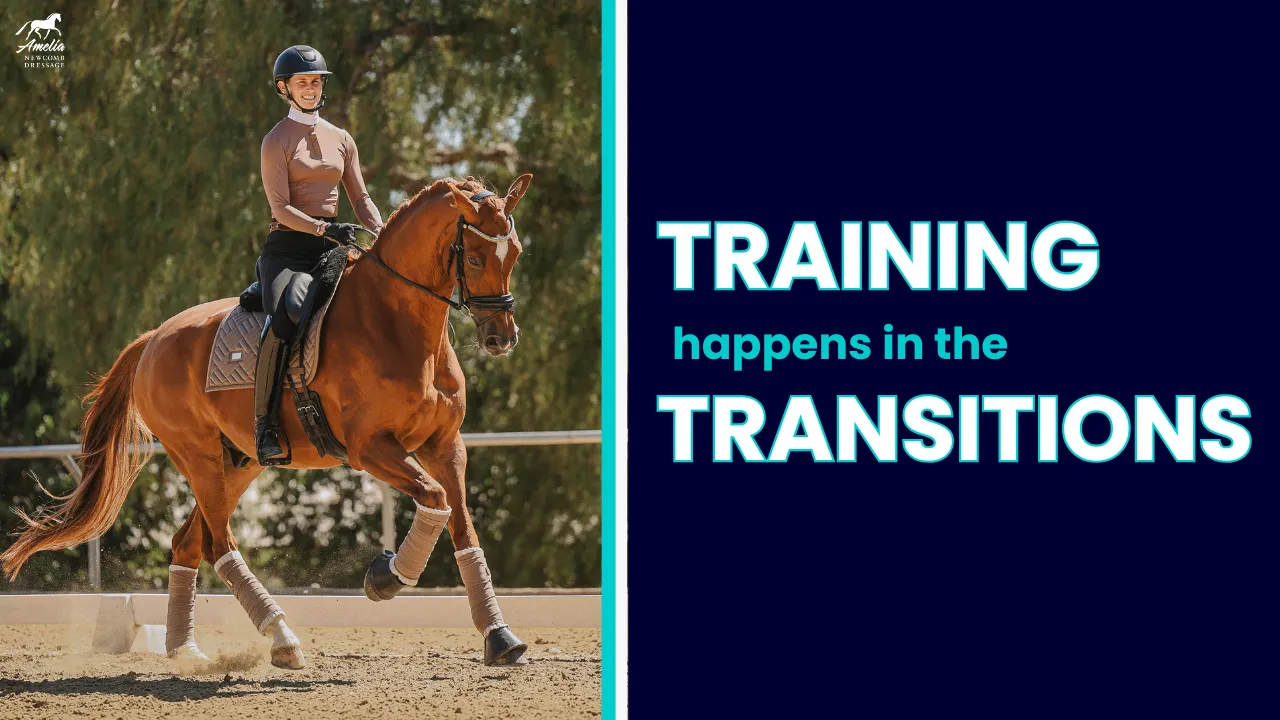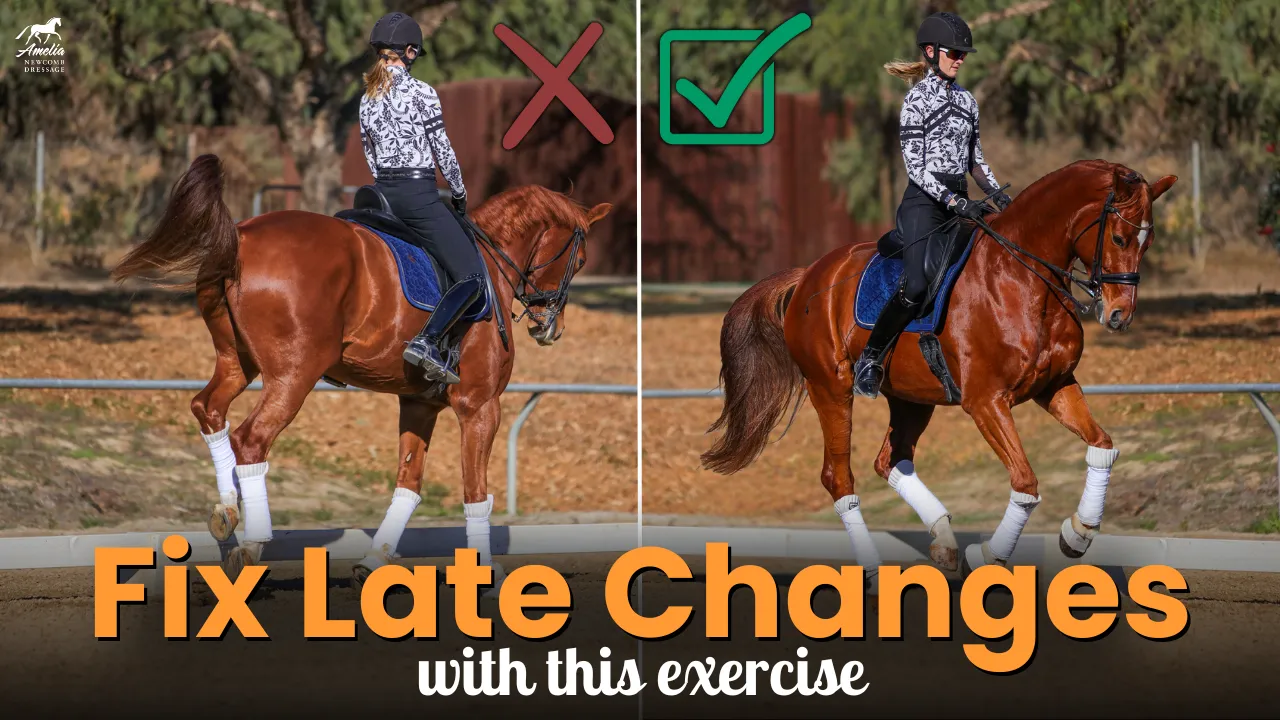Today, we’re going to talk about how to get your horse moving forward. I always say that if your horse can feel a fly on their back, there’s no reason you should be squeezing, kicking, or using too much force to get them to go.
First, let’s discuss leg position. In dressage, you should have contact from your knee to your hip, with your upper inner thigh and upper calf connected to the horse. Notice that there should be space between your heel and the horse. If your lower leg is constantly clamped, you have less leverage to get the horse to move forward. Your lower leg should be off so that when you apply pressure, the horse responds. If your lower leg is always tight, the horse may just think it’s part of the saddle.
It’s also important to have independent aids—your leg, seat, and hands should function separately. If you close your leg, nothing else should change. Often, when people close their leg, they lean forward or pull back on the reins, which confuses the horse. This is like driving a car with one foot on the gas and the other on the brake, it just doesn’t make sense.
If I’m walking and close my leg to ask for a trot but the horse doesn’t respond, I’ll take my leg off and give a firm kick. If that still doesn’t work, I might use a whip to reinforce the cue.
Another effective exercise is trot-canter-trot transitions, which help wake up a lazy horse. When I apply my leg for a transition, my hands and seat remain independent and stable, ensuring clear communication.
Many riders make the mistake of pulling back when they kick, which confuses the horse. When you apply leg pressure, your hands should stay in position, without pulling or bouncing around.
If your horse seems lazy, it’s likely because of how they’re being ridden. Horses are naturally inclined to move, they’re flight animals. If they’re not going forward, it’s usually due to how they’re being trained. It’s crucial to be clear and consistent with your leg position, ensure your aids are independent, and follow through with your cues.
Happy Riding!
Amelia

